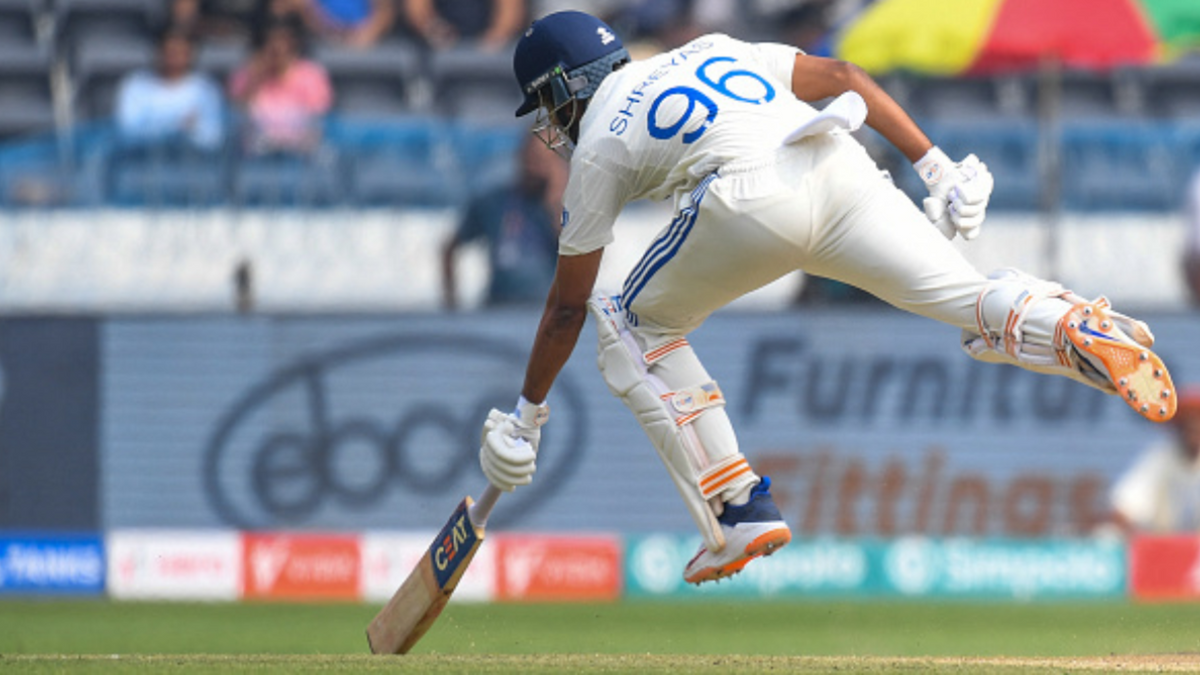
With Shubman Gill getting a hundred against England on day three of the Vizag Test, the pressure is now on Shreyas Iyer after he fell for another low score. This could be his last game in the series, writes Sarah Waris.
Subscribe to the Wisden Cricket YouTube channel for post-match analysis, player interviews, and much more.
Shreyas Iyer is India’s spin basher. It is a reputation that has seen him carve out a spot for himself in the Test side despite his perceived flaws against the short ball. Oppositions target him as soon as he enters, with England most recently looking to bounce him out in Hyderabad, bringing Mark Wood on as soon as Iyer walked out.
Against all pacers, Iyer averages 30.2 in Test cricket, playing out nearly 70 per cent dot balls against them. In ODIs, the average is 37.07 – not awful, but hardly befitting the prime slot in a prized line-up; this is an issue that spans conditions and formats. It’s rare for a player to win continued selection with such a frailty against one kind of bowling. That is, unless, it’s set against a significant strength. Against the slower bowlers, Iyer has been supreme: He averages a whopping 86.4 against spin in ODI cricket, nearly identical to the 84.50 he averaged in his first 10 Test innings against spin. On debut, he made a stellar hundred at home against New Zealand, with his skills against the slow bowlers on show.
His strength against spin has also helped ease the weaknesses of the other Indian batters against them. Since 2019, only two players, Rohit Sharma and Shubman Gill, have faced at least 300 balls and averaged over 40 against the spinners at home. It has left the middle order susceptible, with Gill opening in the format till recently, and Iyer was an answer to their problem.
Mohammad Kaif recently explained what made him so special against the spinners: “In my opinion, no one plays spin better than him in this team because he takes single and doubles as well, and hits sixes straight down the ground. In the middle overs, when spin creates pressure with dot balls, he finds boundaries there. That is his strength. No matter how good the bowlers are in the middle, the runs don’t stop.”
On Sunday at Vizag, though, Iyer lacked his familiar confidence against them, looking to defend the slower bowlers instead. Walking in to bat at No.4 in the ninth over, Iyer faced 52 balls for his 29 runs, largely failing to get going against the spinners.
He faced 45 balls against them and had a strike rate of 55.55, scoring 25 runs, but the lack of intent was visible. He defended anything that was tossed up on the front foot and went back for the length deliveries. He was also tentative in anticipating the spin on a few occasions, as the ball skidded past his defence onto the pad. It’s not that Iyer struggled with his footwork, for he was not afraid to dance down the track to negate the turn, but rather than taking the bowlers on, he was content playing out the dots or taking singles. England’s spinners are talented, but the spin attack for this Test, excluding Joe Root, has three caps between them. These are the types of attacks the best players of spin put under pressure.
This approach had hurt India in the Hyderabad run chase, where Iyer scored 13 in 31, hitting a single four. A bit more proactiveness could well have seen a different result. In Vizag, when he did try going big, he ended up hoisting a full-length ball to mid-off where Ben Stokes held onto a stunner.
In contrast, there was Yashasvi Jaiswal’s double ton earlier in the game, which was a masterclass on how to tackle the spinners in India. He danced down the track regularly, hitting four of his first five sixes on day one that way, looking for the regular singles to put them under pressure. Iyer is known to bat similarly and was a vital player for India in the 50-over World Cup, where his average of 233 against the slower bowlers played a big role in the side’s spectacular run to the final.
In Test cricket, though, Iyer is struggling with that aspect of his game. He has not crossed 35 in 12 innings since the start of 2023, averaging 17 in this period but what is a bigger worry is his declining game against the spinners. In the last 12 months, Iyer averages 18.9 against the spinners, with a dot percentage of 68.6. He has also fallen to them seven times in eight innings, the most recent being his dismissal off Tom Hartley.
In the last year, Iyer has averaged 13.8 against the quicks, but it is a record that could have been overlooked if he was lethal against the spinners, the reason why he was in the team in the first place. But his repeated failures have left India short-handed.
In other circumstances, perhaps he would be given more time. But time is fast running out. There is a gap after the second Test, and Virat Kohli and KL Rahul may yet be back for the third. Rohit is the captain, and Jaiswal and Gill have each made milestones in this game. That rounds out India’s top five, with the bottom six reserved for bowlers and all-rounders. This might have been Iyer’s last innings in the India Test side for the time being.








